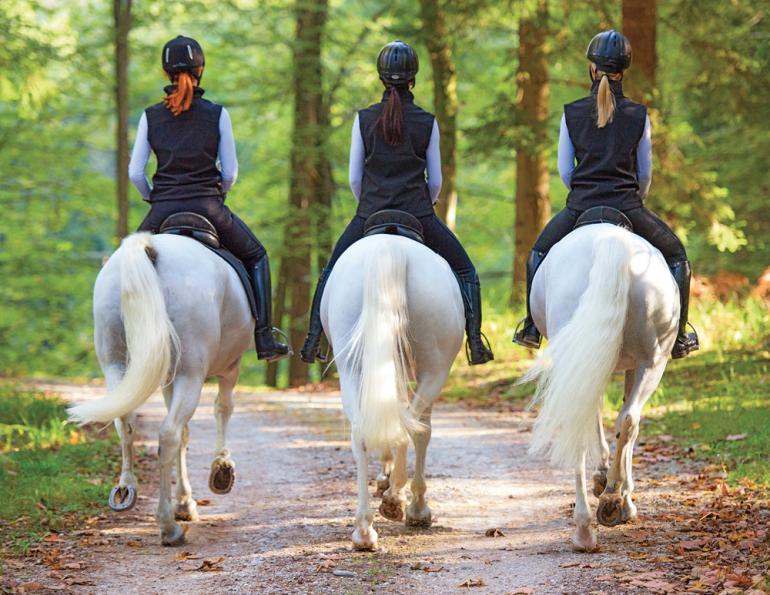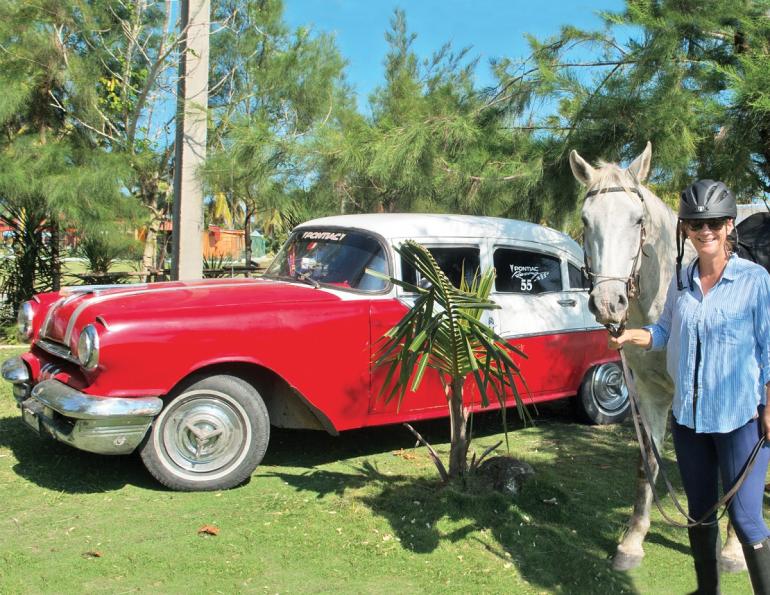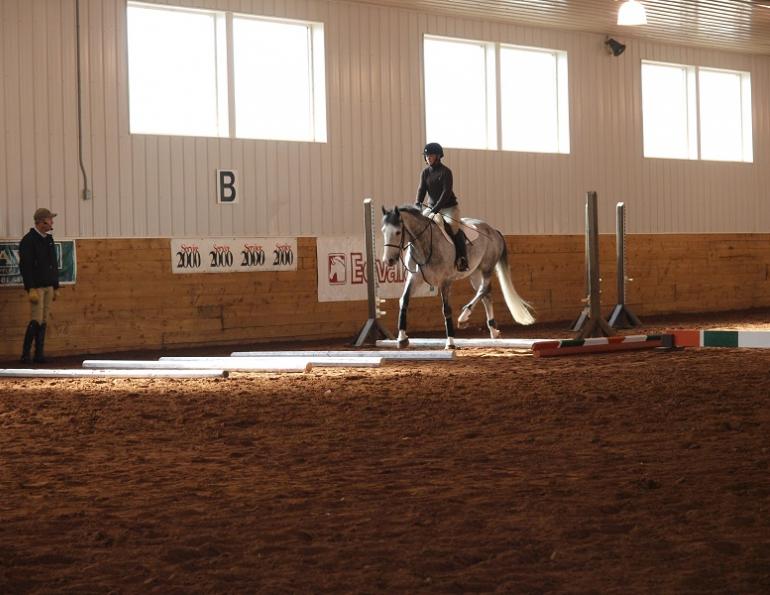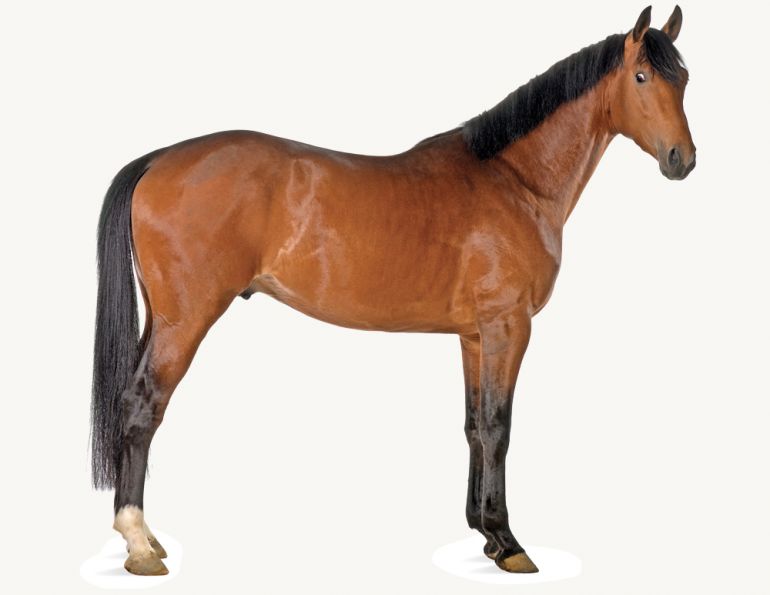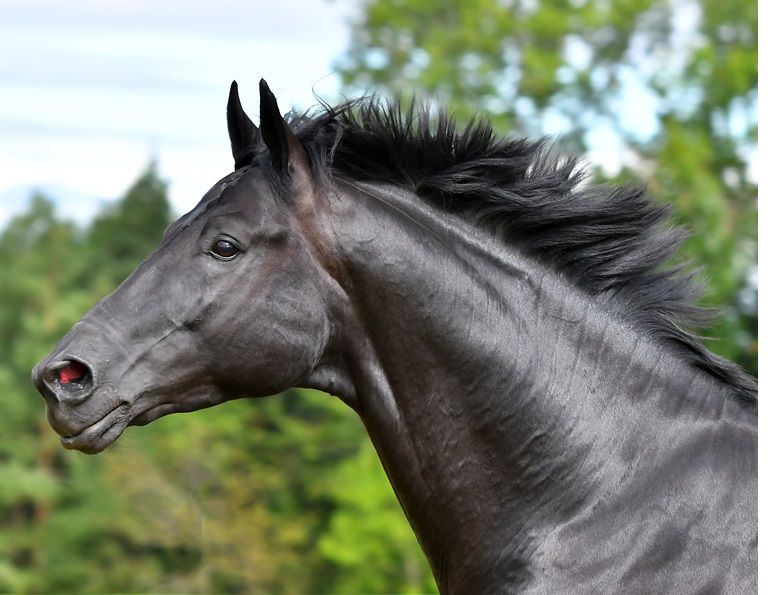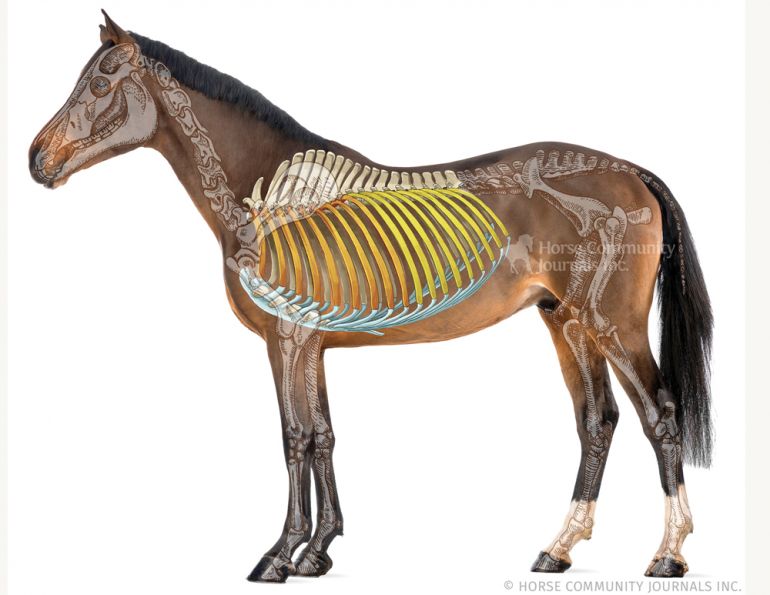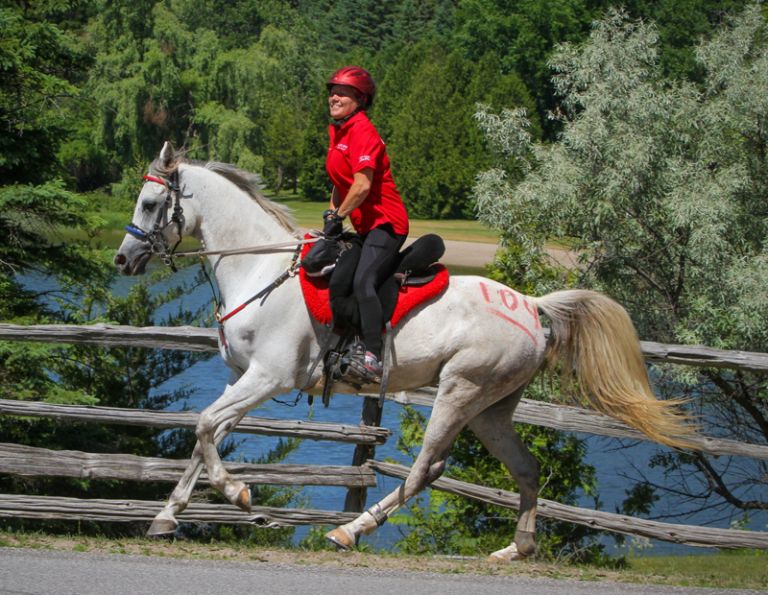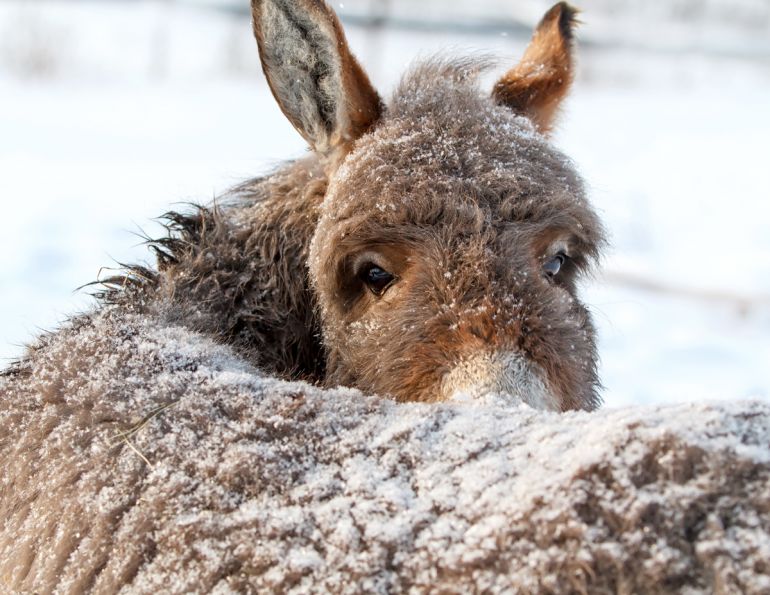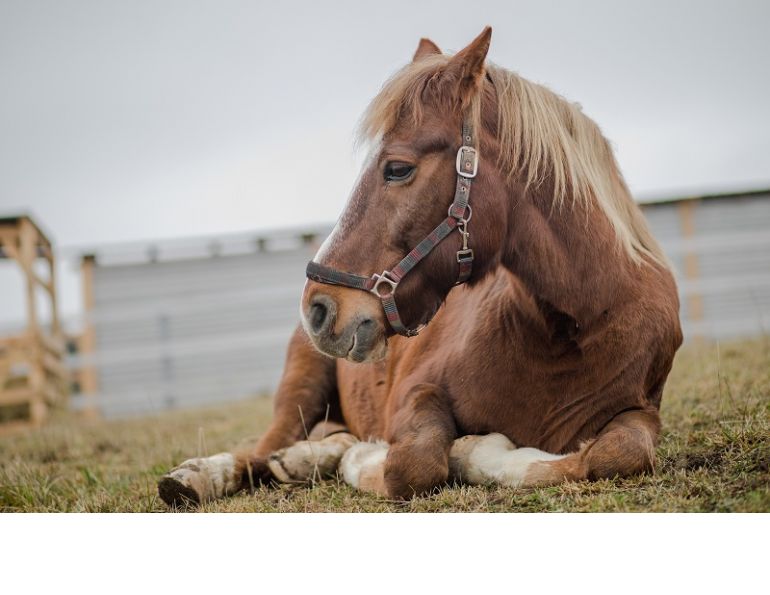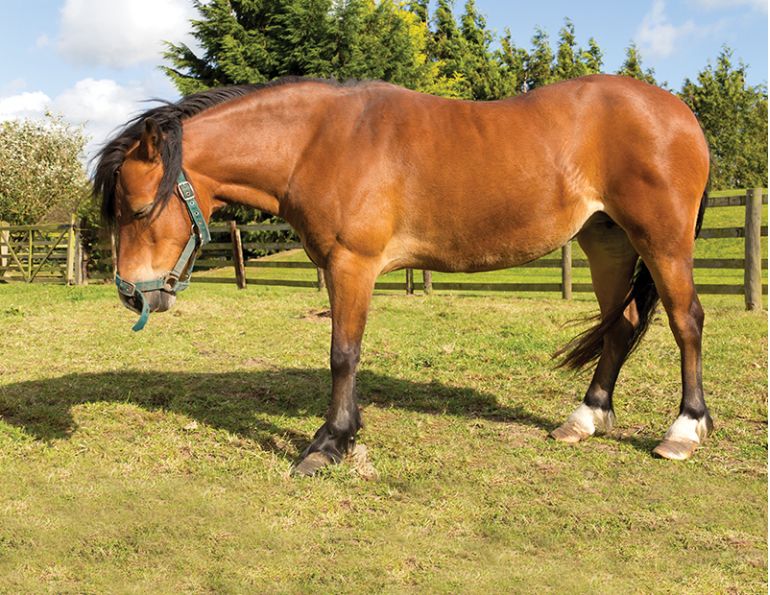By Alexa Linton, Equine Sports Therapist
Today we venture back in horses and down in humans, into territory that many believe to be the foundation of the skeletal system and the body itself: the pelvis. It is an area of much more complexity than many realize, an area that impacts, quite literally, every other part of the body. It contains and protects some rather important things, namely the urogenital system, and provides stability to many others. And in horses and riders, pelvic happiness is critical for success in the saddle.
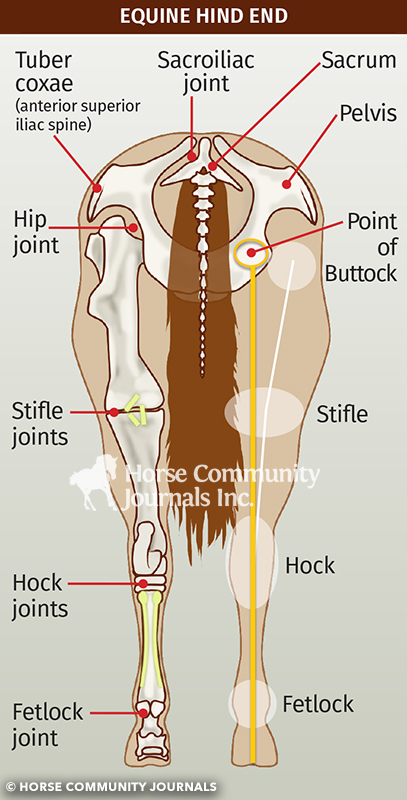
As a student of osteopathy, I’ve assessed a whole lot of pelvises, many of them belonging to riders, and we’ve got some of the stickiest, most rigid ones around. The very same pelvis that is meant to follow our horses fluidly and create connection is often about as fluid as a concrete block. And many of our riding horses are not far behind, making it challenging for them to be gymnastically capable of what we’re asking under saddle. How do we know how mobile a pelvis is? And more importantly, how do we help to mobilize this essential area?
First, put your geek hat on. We need to understand the mechanism of the pelvis to get a sense of what we need to do to support its mobility. The innominate bone is actually three separate bones at birth – the pubis, ischium, and ilium – which eventually fuse together, completing at as old as 17 years in humans. (In horses, the pelvis is still growing and fusing at age four, just one more reason to let our babies grow up before we start asking more of their bodies.) The meeting point of these three bones is the acetabulum, a concave surface which doubles as the articulating surface for the femoral head. This is the ball-in-socket coxofemoral joint, most commonly known as the hip joint. The meeting of the two pubic bones is called the pubic symphysis and for riders, the mobility of this region is paramount to your comfort, especially at the seated trot. And on the other end of things, the ilium of the pelvis and the sacrum (the flat bone at the base of your spine) meet to form the two sacro-iliac joints, attaching the vertebral column to the pelvis and the rest of the body (see Figure 1). Many riders are quite familiar with one or both of these joints in ourselves, because they are common areas of discomfort. Not surprisingly, the same is true for our horses.
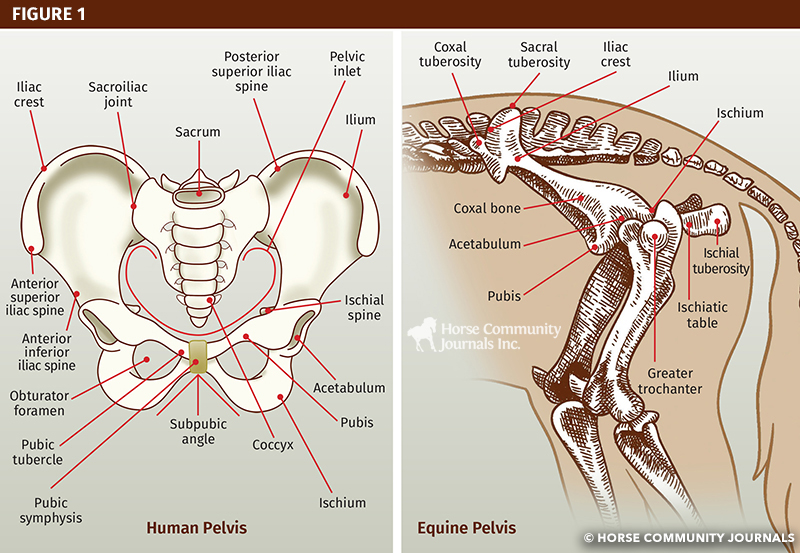
Related: Saddle Fit for the Rider - Male vs Female
Given our verticality, our pelvis is shaped rather differently than that of our horse, but the principles are very similar. In health, the sacrum dissociates from and moves freely between the ilia, the three bones of the pelvis have fused well and have rebound, and the femoral head moves easily (but not too easily) in the acetabulum. As one can imagine, this is not commonly the case, especially when you add ligaments, muscles, fascia and dura to the mix, as well as take into consideration the intrinsic connection to the lower extremity, the vertebral column, the pelvic floor and our old friend, the coccyx/tailbone. If you’ve ever fallen hard on your tailbone or on one of your hips, these seemingly insignificant compressions have the potential to affect your pelvis and spine big-time, not to mention the happiness of your horse under saddle. A hit to the tailbone can quite literally cause whiplash, or in some cases concussion, impacting the nervous system, the blood flow in the pelvis and lower extremity, and most commonly, limiting the mobility of the sacrum and with it, the innominate. When the hip joint is limited in its movement in horse or rider, the lower extremity, sacrum, or innominate bones compensate, and movement can become lopsided and a very real source of asymmetry in our horses. As for whole body connection in the horse, the supraspinous ligament is a continuation of the nuchal ligament, attaching from the seventh cervical vertebrae all the way to the sacrum, the dura mater protecting the spinal cord runs from inside the cranium to attach firmly on the sacrum, and the myofascial chains connect all the way from cranium to pelvis and beyond (see Figure 2).

So what is the pelvic floor and why does it matter? In riders, it is thought of as the foundation of our core stability, essential to our seat and balance in the saddle. This “diaphragm” of pelvic muscles is critical in pressure regulation and drainage, keeps our internal organs from sliding away on us, and weakness or tightness can cause some very uncomfortable issues in certain cases. Becoming friends with this region will make everyone happier, and part of this process is ensuring the skeletal system supporting it is functioning well. Kegel (pelvic floor) exercises are often suggested to strengthen the pelvic floor.
So how do we know what’s mobile? And how do we help? First, we’re going to need help, especially for ourselves - assessing our own pelvis is tricky at best. For your horse, I always suggest the assistance of a professional initially. That being said, one of the easiest ways to assess the symmetry of the horse’s pelvis is to grab a piece of binder twine, and measure and compare the distance to the top of the tuber coxae (the big bone sticking out), and then from the tuber coxae on each side to the ground (see Figure 3). With your horse square in the hind end, you can eyeball the height of each iliac at the sacroiliac junction from behind to see if they are even. You can then, with safety front of mind, assess the range of motion bringing each hind leg forward and back, never stretching beyond the comfort of your horse (see Figure 4). It is also important to watch the footfall of the hind feet - if they rotate while on the ground, you may be working with an unstable pelvis.

Photo: Alexa Linton
With the combined assistance of your favourite human and equine professionals, you can learn a great deal about the health and happiness of the pelvis and the necessary steps to move toward the fluid, following pelvis you’ve always wanted. As mentioned previously, I love osteopathy and it is my preferred modality, but listen to your body and to your horse to choose the right fit for you.
To maintain that mobility, get your yoga on. Your pelvis is going to need regular attention to stay fluid. I love pigeon pose, downward dog, child’s pose, and working with a full seated squat daily. I am also working to break my habit of crossing my legs, and to move my body in ways that open up this area, which includes Kegel exercises for my pelvic floor.
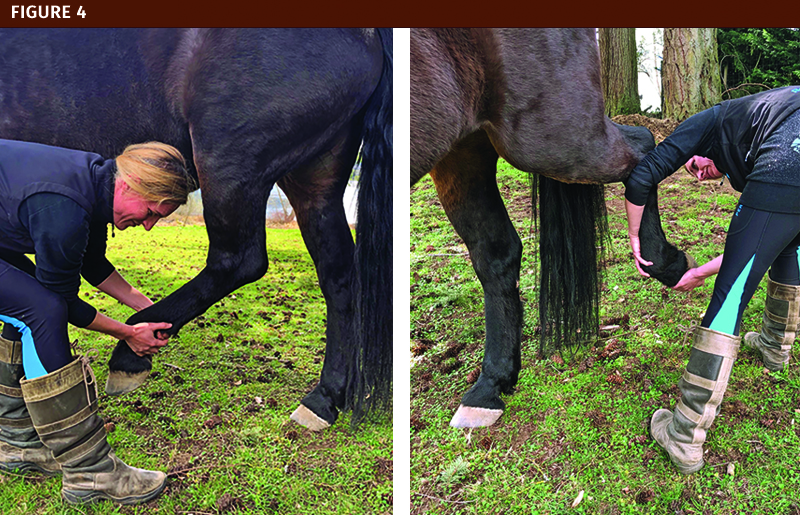
Photo: Alexa Linton
For our horses, our goal is often to increase stability in the pelvis, while increasing range. I have been adoring the slow and steady strength, stability, and flexibility building of the Academic Art of Riding, shared on Vancouver Island in clinics with Kenneth Vansweevelt organized by Heather Nelson, promoting symmetry and looking at the connection of the pelvis to the whole body. You can also bring in stretches for the hindquarter to work specifically with tight hamstrings and stretch over the sacroiliac junction. And if your horse is anything like my Diva, a good bum rub is both a great connector and excellent for restoring mobility and circulation to the soft tissue around the pelvis.
Alright, onwards to open, happy hips for you and your horses in perfect time for the summer riding season – enjoy!
To read more by Alexa Linton on this site, click here.
Related: Thoracic Assymetries and the Relationship with Saddle Fit
Originally posted September 16, 2019
Main photo: iStock/SimonKR



